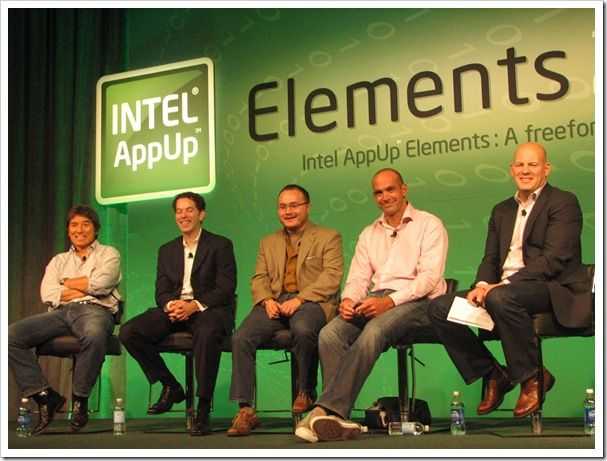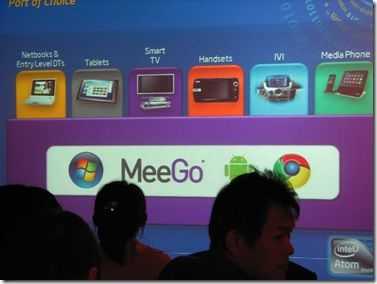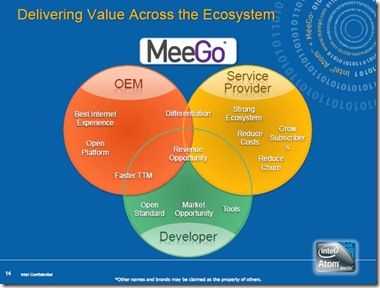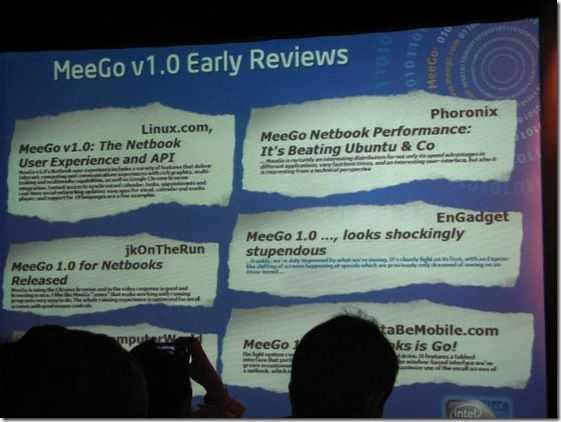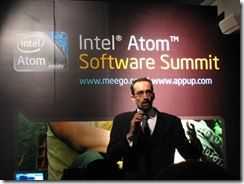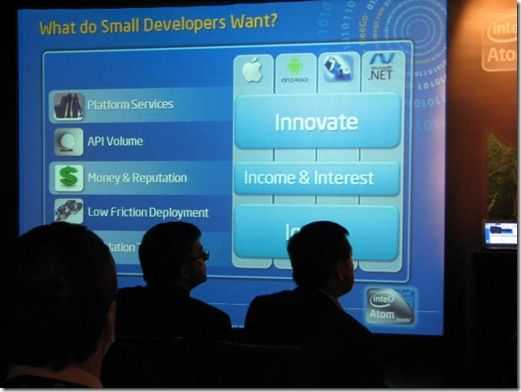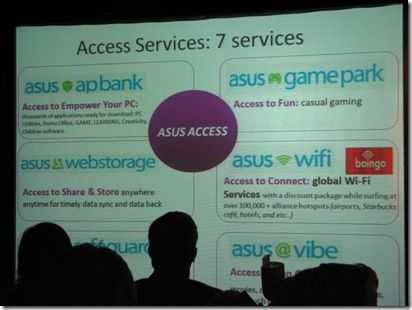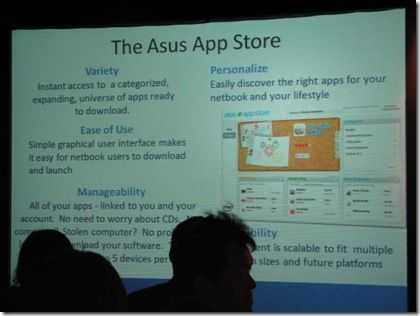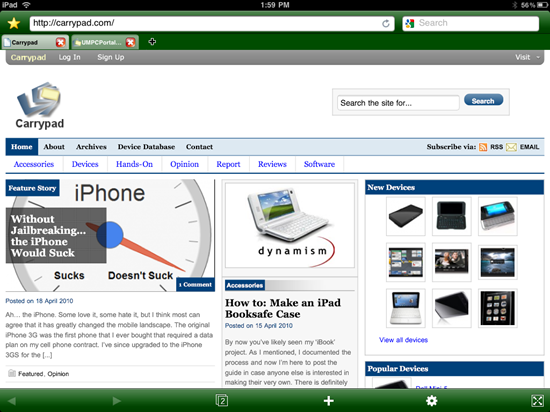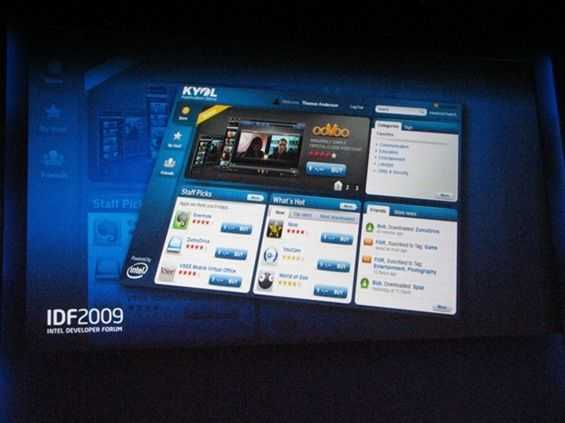 If you’ve been following tech websites recently, you will have heard a lot about application stores and applications over the last year. Apple did it and everyone followed. Developers have made money and customers have enjoyed a huge range of software solutions. A year ago, Intel announced that they too were getting into the app-store game. With 30 million netbooks out there and a clear strategy to push into TV, smartphones and cars, it wasn’t a bad idea at all. Last week Intel took us to San Francisco to get an update on the progress so far.
If you’ve been following tech websites recently, you will have heard a lot about application stores and applications over the last year. Apple did it and everyone followed. Developers have made money and customers have enjoyed a huge range of software solutions. A year ago, Intel announced that they too were getting into the app-store game. With 30 million netbooks out there and a clear strategy to push into TV, smartphones and cars, it wasn’t a bad idea at all. Last week Intel took us to San Francisco to get an update on the progress so far.
Since last year we’ve seen some progress by the teams to roll out a client to Windows and to seed some apps by offering prizes for new apps. They’ve also seen progress in the netbook market which has now grown to 70M with another projected 40M to come on top of that in the next year. They’ve also seen the tablet opportunities take off as Apple proved that it could actually be a successful form factor. Clearly Intel are doubling-up their efforts too as we experienced an unprecedented amount of marketing for a software product. Keynote mentions, an AppUp store in the high street (the former Sony Style store no less) and an additional 2-day conference dedicated to everything AppUp. Full disclosure must be given at this point we had a fantastic time at the ‘Elements’ social event on Wednesday!
So it looks like AppUp is getting the support from within Intel but does it really stand a chance? Do we need software store on Windows? Possibly not but AppUp is a bit more than just a repository and spreads further than just netbooks.
Key Features of AppUp
- Write native code C++, QT
- Assistance for porting iPhone apps is available (Angry Birds is coming soon!)
- Write Flex apps (Adobe flash or Adobe Air)
- Silverlight support is being worked on
- Intel are managing the payment back-end
- Intel are managing the app authorisation
- There will be multiple branded and tailored stores. (We’re hearing that there could be 10 or more by the end of the year.)
- Tailored stores do not have to show a complete catalogue
- Intel are introducing a curation system where partners can highlight good apps. (this could extend to community members)
- Sega, Konami, Unity and other game creators are on board
- Device manufacturers are on board (Asus and Samsung will distribute the store with netbooks)
- Device distributors are on board (Best-Buy, Currys and others have announced they will promote the app store)
- The future includes media distribution
- The future includes affiliation schemes (this is a killer feature in my opinion)
- The hardware platforms we’ve seen so far are blowing away anything you’ll see on a smartphone in 2010.
AppUp is out of beta and available for Windows and Moblin (MeeGo coming soon.) You can download it here.
Over and above all that, there’s a significant point to note this isn’t just a Windows-based product. Intel are pitching this as a value-add feature for MeeGo too and that means tablets, smart devices, smartphones, Smart TV, Google TV, MeeGo TV and products like Boxee that have announced they will ship a product on Intel Atom. Total addressable market for AppUp is quoted as about 500 million end user devices by end of 2013. With sales of netbooks due to reach 200M by that time I’d personally put it much higher. Develop today and you could be looking at some serious opportunities by end of 2011. I’m not joking when I say that i’m seriously looking at going back into writing software!
Problems Solved
It looks like Intel will have enough installed user-base before mid-2011 and with Intel’s marketing power and a big number of manufacturers and retail partners will solve the problem of activating those end-users. They also seem to be on track to seed applications by offering an easy route for porting from existing platforms. The Adobe Air route is almost too simple and I expect to see hundreds, if not thousands of flash games being optimised over to the platform (along with a new monetisation opportunity) in no time at all.
The problem of having compelling end-user products seems to be well on its way to being solved too. I see Windows as a barrier until MeeGo products hit the market but with Intel’s Atom platforms growing to cover the 4 inch to 42 inch+ screen range, there’s a tidy set of silicon, software and solution stacks forming. We’ll see interesting products in 2011 for sure. Google TV and the current tablet craze will make sure of that.
Getting the word out to developers shouldn’t be too hard either. Once the installed user-base is in place and once a few MeeGo products are on the market it will only take the existing media channels, blogs, forums and some Intel incentives to get the developers interested. If there’s one thing thats for sure, there are a huge number of fickle devs out there just looking for the next revenue opportunity.
Guy Kawasaki, Scott Hershkowitz, Ben Parr, Loic Le Meur, Regan Fletcher at AppUp Elements
The 5 Challenges.
Challenge 1 is to seed the application store with quality applications that have been written with the end platform in mind. Right now we’re seeing apps ported over from other platforms (Windows Mobile, AIR, iPhone) to the netbook. While these apps seem to be taking the netbook screen into account, most of them are ignoring much of the screen space, processing power and graphics opportunities. I certainly didn’t see anything that blew me away at IDF and Elements.
Challenge 2 is to prevent the problem of applications appearing on the wrong platforms. An application written for MeeGo on a tablet may be looking for an accelerometer that just won’t be there on a netbook. I have no idea how AppUp will handle that.
Challenge 3 is time. iOS 4 is already making huge inroads in this area and if Apple dial-in new products, the momentum won’t stop. The same is true of Android 3.0. Application developers that have had success on these platforms may choose to concentrate on these opportunities first. Chrome OS and HTML5 is also something to watch during 2011 too.
Challenge 4 is Intel itself, While the Elements 2010 evening party was an impressive show of marketing that made me love Intel more and more during the evening, that is not going to make Intel ‘cool.’ How are they going to dial-in the magic that makes people sit up and take notice? AppUp itself is losely branded and likely to appear branded under other names but this sort of fragmentation could actually make it harder to market the solution to developers.
Challenge 5 is MeeGo and Ovi. MeeGo isn’t just an Intel project, it’s Nokia’s baby too and MeeGo for ARM could be huge. If AppUp is dropped on top of ARM MeeGo to make it even more compelling then the whole AppUp project would have bit the Intel boys in the bum. AppUp could limit itself to i86-only but even then, Ovi could come along and boost the products. Remember, ARM and Intel are playing in the same product space with Cortex and Atom,
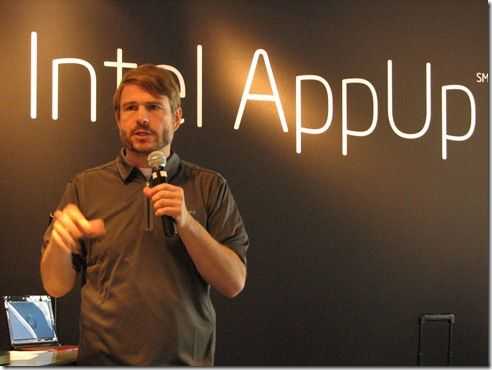
Peter Biddle Head of AppUp Development for Intel
Exposing the Tail and Developer Feedback.
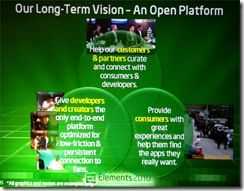 We were wined and dined, educated and stimulated by Intel in San Francisco but however long I sleep on this article I still see huge opportunities and an incredibly flexible application store framework. Curation and affiliation could be killer features and if you take a look at the slide on the right (click to enlarge) you can see that Intel sees the value in exposing the long tail. I wholeheartedly agree with that. The biggest take-away though is the feedback from the developers so far. It’s all very positive and exciting and you can experience that first hand of a video we shot at the Elements event. Check the video out [Coming Soon] and get another opinion about what’s going on here.
We were wined and dined, educated and stimulated by Intel in San Francisco but however long I sleep on this article I still see huge opportunities and an incredibly flexible application store framework. Curation and affiliation could be killer features and if you take a look at the slide on the right (click to enlarge) you can see that Intel sees the value in exposing the long tail. I wholeheartedly agree with that. The biggest take-away though is the feedback from the developers so far. It’s all very positive and exciting and you can experience that first hand of a video we shot at the Elements event. Check the video out [Coming Soon] and get another opinion about what’s going on here.
It looks like we’ve really got quite the challenger here. As Paul Otellini said in his keynote last week, it’s about providing computing solutions and not just silicon now. Yup, it’s all about the apps, stupid!


